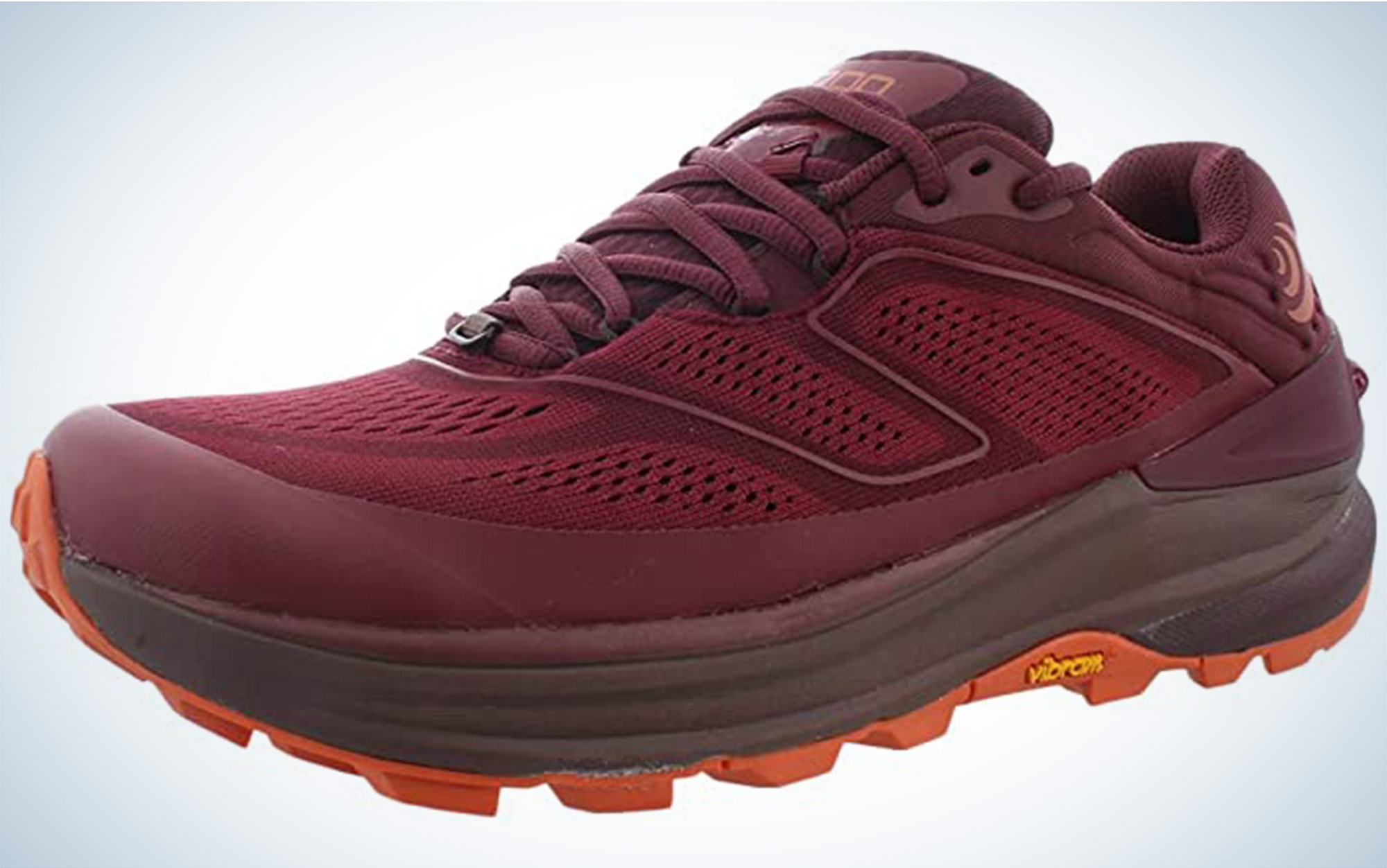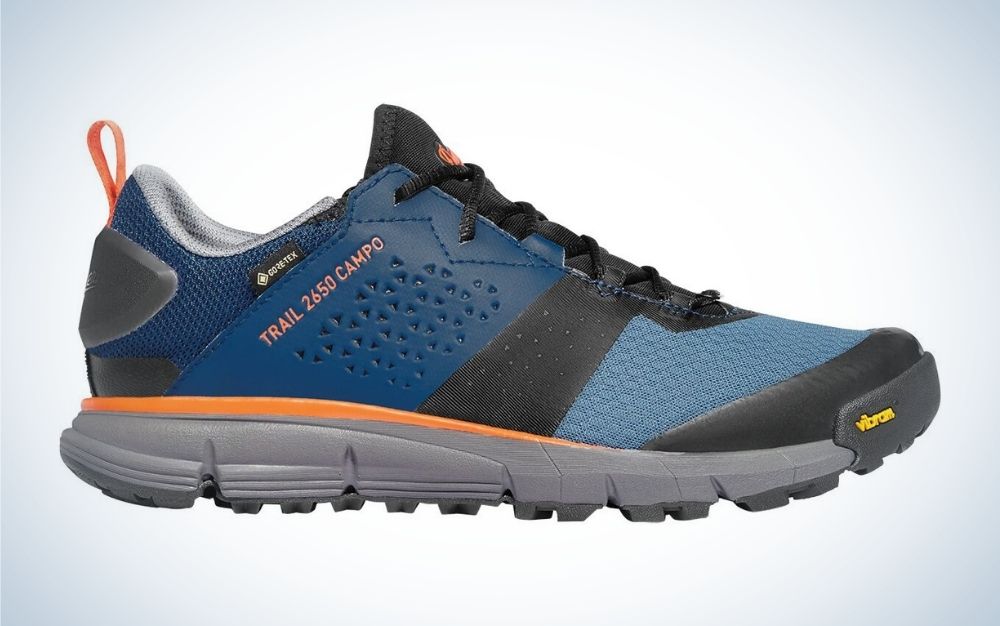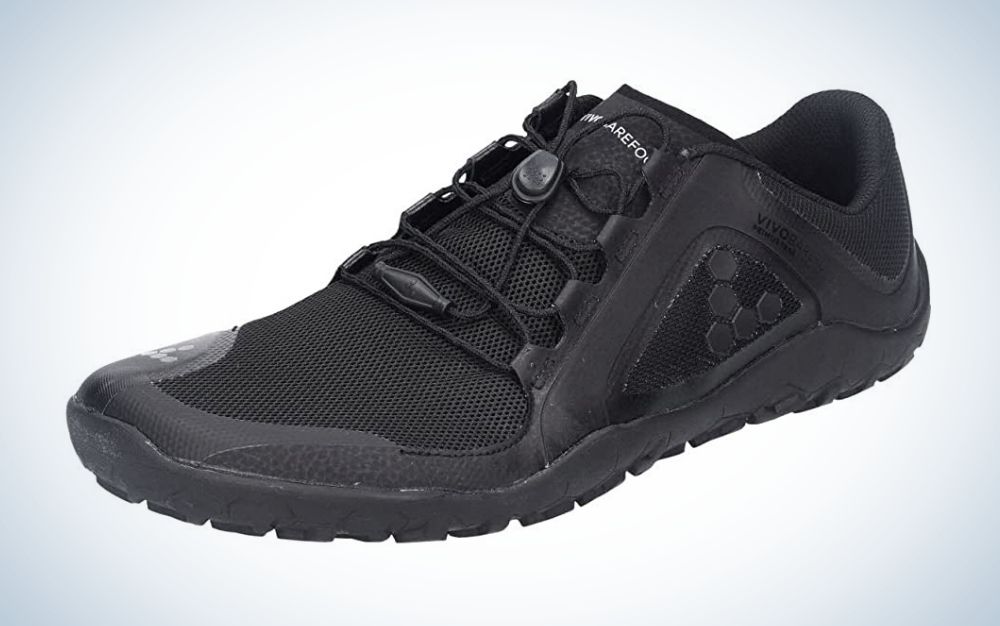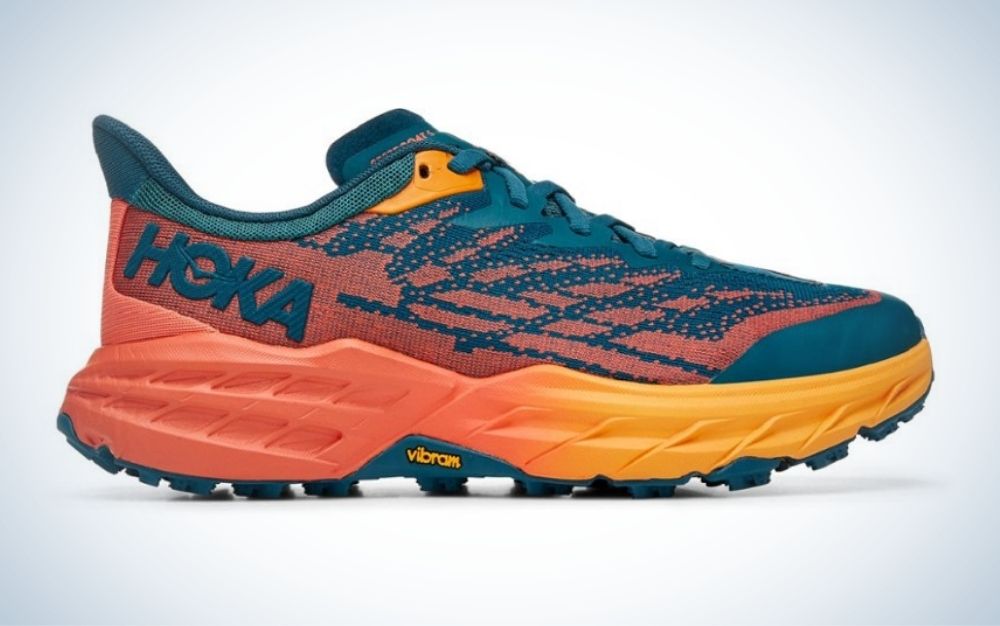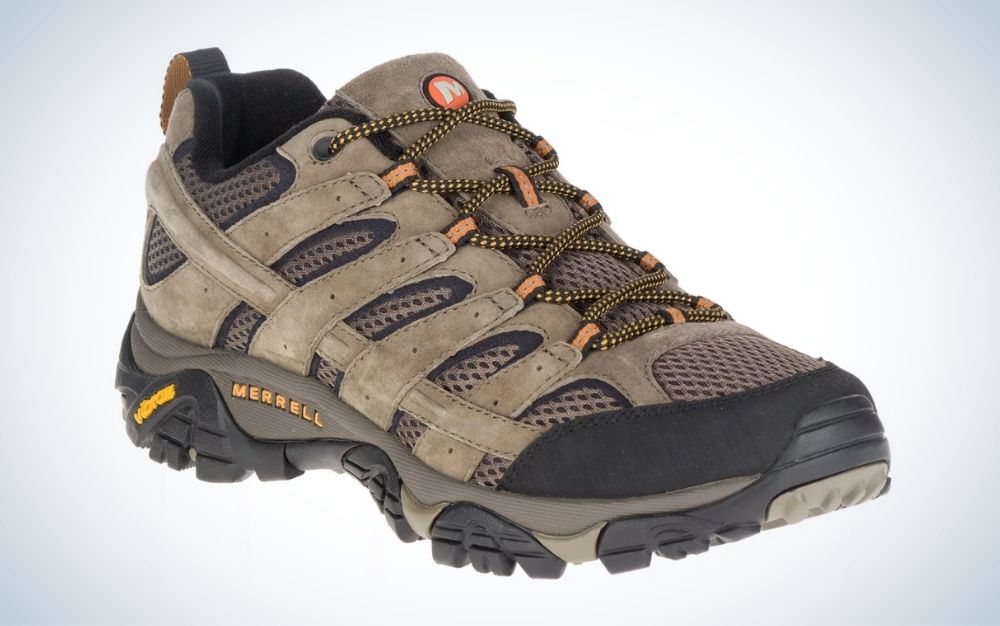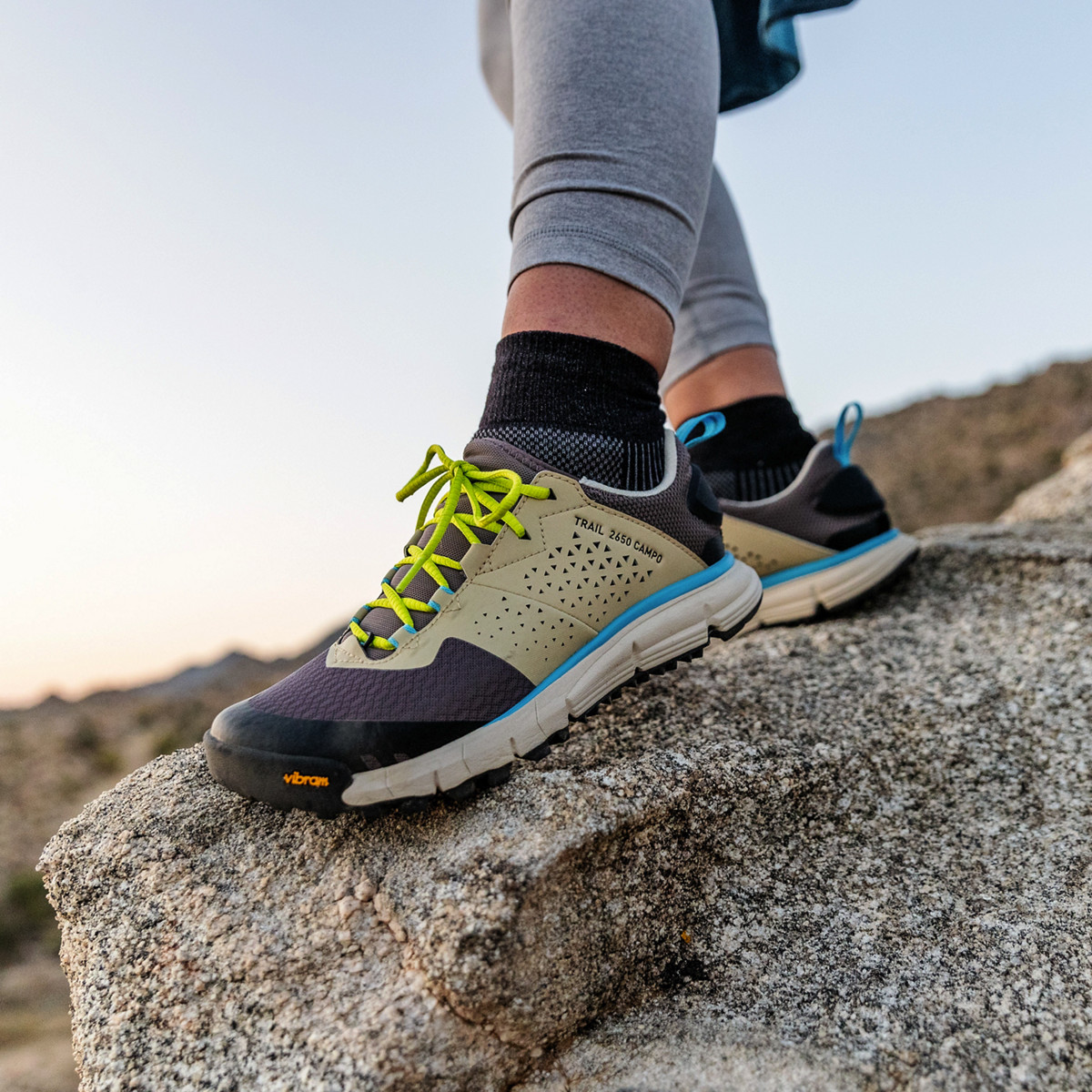
We may earn revenue from the products available on this page and participate in affiliate programs. Learn More ›
Updated Jan 19, 2023 7:56 PM
In recent years, the line between hiking shoe and trail running shoe has blurred, with more and more day hikers, and even backpackers, opting for the latter. Today, there are options ranging from durable shoes with similar ground protection of the best hiking boots to lightweight shoes that border on minimalist trail runners. To find the best hiking shoes on the market, I talked to a variety of individuals, from staff here at Outdoor Life to long-time gear testers to members of the Colorado Mountain Club.
Things to Consider Before Buying Hiking Shoes
To learn more about how to choose between hiking boots, hiking shoes, and trail runners, I chatted with Kim Kelley, a member of REI’s virtual outfitting team. Here’s what I learned:
Hiking Boot, Hiking Shoe, or Trail Runner?
The choice between hiking boots, hiking shoes, and trail runners is a matter of personal preference. Some like the secure fit of a hiking boot, while others prefer the more athletic feel of a trail runner. Still, others are looking for something in-between. A hiking shoe can provide a nice mixture of the foot and ankle support of a hiking boot with the lightweight, athletic profile of a trail runner. At the end of the day, the choice is about what’s most comfortable for you.
Ankle Support
It turns out that the upper of a hiking boot does not help prevent ankle rolling—it’s actually the firmness of the base that does this. If you’re thinking about switching to a hiking shoe from a hiking boot, you can test this by trying to twist the base of the shoe. If it moves, it won’t provide as much ankle support.
Arch Support
On long hikes or backpacking trips, it’s common for the arch of the foot to become fatigued, which can lead to plantar fasciitis. A common cause of this, especially among day hikers and backpackers, is overpronation, where the foot leans or collapses inward. Anyone experiencing this, or suffering from pain while they walk might benefit from an insole like Superfeet (individuals with exceptionally strong arches may prefer a Currex insole).
Shoe Size
With hiking shoes, it’s important that there’s some space between your toes and the end of the shoe—aim for about a finger’s width of space between the end of your toes and the tip of the shoe. For most people, that will work to about a half size larger than they typically wear. However, Kelley cautions that many people, especially women, rely on shoe sizings that they received when they were younger, and don’t take into account the natural growth of the foot over time. Getting your foot sized by a professional—something you can do through REI’s Virtual Outfitting without visiting a store—is an important part of choosing a hiking shoe.
Traction
Traditionally, one of the most important differences between trail runners and hiking shoes was the size of the lugs. But today, there are a number of trail runners on the market with substantial lugs that mirror the functionality of traditional hiking shoes or boots.
Durability
One important difference between hiking shoes and trail runners is durability. Hiking shoes typically last for 500 to 700 miles, while trail runners only last 300 to 500 miles. Factors that can affect this include the durability of the rubber, the sole, the midsole, and the uppers (leather vs. mesh), as well as the weight of the person wearing the shoes and the conditions they frequent.
Best Hiking Shoes: Reviews & Recommendations
Best Overall: Altra Lone Peak 6
Key Features
- Weight: Men’s: 21 ounces, Women’s: 17.4 ounces
- Stack height: 25mm
- Heel-to-toe drop: none
- Lug height: 6mm
- MaxTrax outsole
- Available in regular and wide
Pros
- Wide toe box increases stability
- Substantial lugs for improved traction
Cons
- Rock plate can inhibit ground feel
- Heel doesn’t lock in as securely
The Altra Lone Peak 6s combine the best features of responsive trail running shoes with the serious bona fides of a true hiking shoe. This shoe is a great choice for everything from long distances to day hikes to trail runs. It starts with a zero-drop in the stack height (meaning there’s no height difference between the front of the shoe and the back of the shoe), which promotes striking on the midfoot. Yet, they still provide enough cushion for committed heel strikers. The Lone Peak 6s also have an unusually wide toe box that allows your toes to splay as you hike, improving ground feel and promoting stability.
To protect the foot from sharp rocks and other trail hazards, the midsole is equipped with comfortable cushioning and a solid rock plate. One OL staff member was impressed by the substantial lugs on the Lone Peak 6, which performed well on a steep pass covered with wet leaves, “I felt in control even in the moments I slowed down out of caution,” they said.
Best Transition: Topo Ultraventure 2
Key Features
- Weight: Men’s: 20.8 ounces, Women’s: 16.6 ounces
- Stack height: 25mm
- Heel-to-toe drop: 5mm
- Lug height: 6mm
- Vibram XS Trek EVO rubber outsole
- Available in regular only
Pros
- Wide toebox
- Moderate cushion
- Great heel lock
Cons
- Durability in harsh terrain
- No wide option
This trail runner is the perfect bridge from a hiking boot to a lightweight hiking shoe. The wide toebox allows for excellent toe splay favoring stability and balance on rocky terrain. It breathes easy and the thick lugs and cushioning outsoles make for a an extremely comfortable trail runner out of the box. If you’re interested in a minimalist shoe, but concerned about making the jump, this shoe can also be a transition between a hybrid show like the Danner and a zero drop shoe like the Altra or Vivobarefoot. Its lower stack height and heel drop is just minimalist enough to ease your feet and gait into new footwear while the heel lock keeps you feeling secure. There is no wide option, but the toebox has a good amount of room.
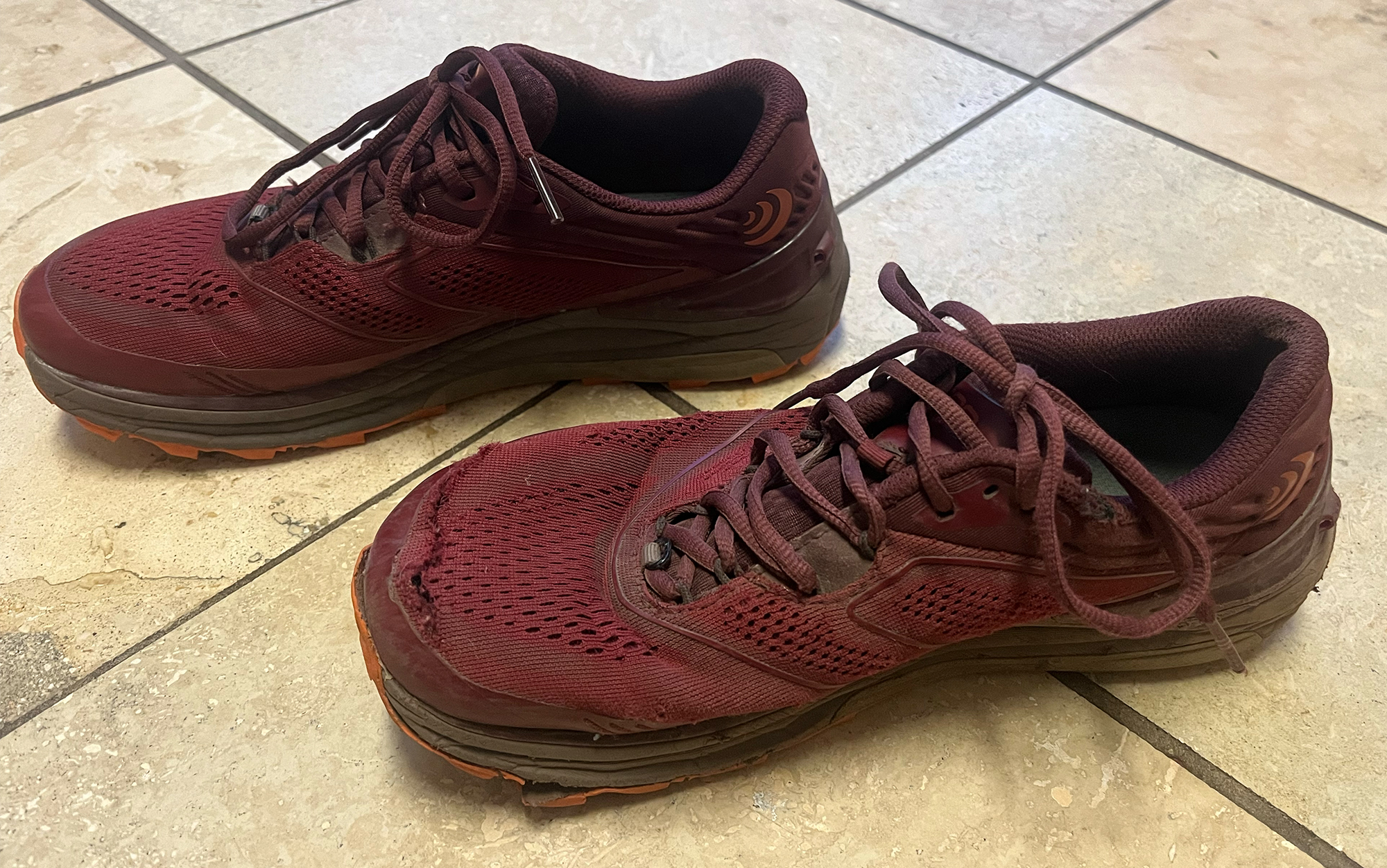
If you’re frequenting talus fields or scree-filled slopes, you might run into durability issues. I did 100 miles above alpine in these shoes and came home to rip one on a dirt trail day hike. While I certainly put this shoe through the wringer, it was only 5 months old and in the vicinity of 200 miles. It shouldn’t have damage to the extent noticeable in the photo. However, the Topo team did replace my pair after the rip and the replacement is still my go-to shoe.
Best Hybrid: Danner Trail 2650 Campo GTX
Key Features
- Weight: Men’s: 24 ounces, Women’s: 19 ounces
- Stack height: 32mm
- Heel-to-toe drop: 8mm
- Lug height: 4mm
- Vibram 460 outsole
- Gore-Tex option
- Available in regular and wide
Pros
- Great fit
- Protects the foot like a traditional hiking shoe
- Fast break-in period
Cons
- Heavier than a typical trail runner
- Substantial heel-to-drop promotes heel striking
It can be tough to transition from the durability and secure fit of a heavier hiking boot or hiking shoe to lightweight trail runners, which aren’t always built for the heavy loads some backpackers carry. In preparation for an upcoming thru-hike, one tester took the Danner Trail Campo 2650 GTX on a series of day hikes that totaled fifty miles around Land Between the Lakes in Kentucky. She found that the integrated tongue of the shoe improved the overall fit, locking her heel into place and giving her the stability she was accustomed to from hiking shoes. Strategically placed leather panels on the upper also helped protect her toes and Achilles area, while the ventilation in the Gore-Tex kept her feet from overheating.
But they were more akin to trail runners when it came to comfort, “I did not have to break them in at all—they felt great on the first hike,” she reported.
Key Features
- Weight: Men’s: 18.4 ounces, Women’s: 15.7 ounces
- Stack height: 6.5mm
- Heel-to-toe drop: none
- Lug Height: 4mm
- Firm ground outsole
- Available in regular only (although they run wide)
Pros
- Short stack height and zero heel drop make this a true barefoot shoe
- Durable lugs and reinforced upper
Cons
- The upper requires some break-in
- Does not provide as much ground feedback as others
Most minimalist trail runners are breezy, barely-there affairs, with only the thinnest membrane between your feet and the ground. And while that works well for low-key trail runs, the Vivobarefoot Primus FG can tackle more challenging backcountry conditions like slickrock, volcanic pumice, or the scorching desert floor at midday.
I wore these on a thru-hike of the Colorado Trail and was impressed by their durability. At the end of the trip, there were no holes in the upper and the seam at the feather edge was intact. While the lugs were worn to a nub at the forefoot, there were no significant signs of wear on the outsole itself. Despite being on the heavy side (although still substantially lighter than a standard trail runner), the Primus FG still performed like a minimalist shoe and promoted a mid-foot to forefoot strike that kept my foot low enough to the ground to negate any concerns of ankle roll. They also dried fast after stream crossings.
One word of caution is that this shoe should only be worn on the trail by people already accustomed to minimalist footwear, as an undeveloped arch is at risk of developing plantar fasciitis without the support of a standard trail runner or hiking shoe.
Most Comfortable: HOKA Speedgoat 5
Key Features
- Weight: Men’s: 20.6 ounces, Women’s: 17 ounces
- Stack height: 32mm
- Heel-to-toe drop: 4mm
- Lug height: 5mm
- Vibram Megagrip outsole
- Gore-Tex option
- Available in regular and wide
Pros
- Comfortable
- Improved stability from previous models
- Excellent traction in wet, slippery conditions
Cons
- Can feel heavy
- Narrow toe box doesn’t allow the foot to splay naturally
The substantial cushion on the Hoka Speedgoat 5 will catch your eye immediately. This feature makes this shoe the go-to for a wide range of people, from day hikers to trail runners to thru-hikers. But the stack height belies the mild heel-to-drop on this shoe, which promotes a mid-foot strike (as opposed to a heel strike), which lessens the impact on the rest of your body—especially if you’re carrying a heavy load down a steep trail.
Compared to previous versions of the Speedgoat, the 5s have slightly less cushion but are substantially more stable. An OL staff member noted that, in combination with the Vibram outsole and 5mm lugs, these shoes were excellent on their state’s varying terrain. Whether backpacking or trail running, “from solid trail to steep skree fields…my foot felt secure and supported,” they said.
Best Budget: Merrell Moab 2 Ventilator
Key Features
- Weight: Men’s: 31 ounces, Women’s: 17 ounces
- Stack height: 25mm
- Heel-to-toe Drop: 11mm
- Lug height: 5mm
- Vibram TC5+ outsole
- Gore-Tex option
- Available in regular and wide
Pros
- Low price
- No break-in period
- Rugged
Cons
It’s no surprise that the Merrell Moab 2 Ventilator was a favorite of CMC members for low-priced hiking shoes. For many people, including those with wide feet, it’s a comfortable hiking shoe from day one that doesn’t result in blisters. And the combination of suede leather and mesh will stand up to tough trail conditions. This is a hiking shoe that you can expect to own for several years without any issues.
Like many hiking shoes, the Moab 2 is heavy, and has a substantial heel drop, especially if you’re used to wearing lightweight tennis shoes. Your ankles may feel more fatigued more quickly in this shoe. It’s also designed to accommodate heel strikers, which is common but something to keep in mind if you typically have a mid-foot strike.
FAQs
Q: Is it OK to wear running shoes for hiking?
If you love your running shoes, wear them everywhere, and are comfortable in them, then yes, you can absolutely wear your running shoes hiking. If you’re heading out on a particularly technical trail, where there’s potential to slip or loose your foot on a steep slope, it’s worthwhile to check out the lugs on the underside of your shoe—if the lugs are worn off, or insubstantial to begin with, you may want to look into buying a new pair.
Q: Should hiking shoes be tight or loose?
Hiking shoes should be locked in at the heel, but then loosen up as the foot moves forward. If the balls of your feet feel constrained or your toes are unable to splay (inhibiting shock absorption) then the shoe’s volume is too small for your foot. One option to increase the volume of the shoe is to take out the insole.
Q: What is a rock plate in shoes?
A rock plate is a hard, thin membrane that doesn’t flex, inserted inside of the shoe, that stops hard or pointy objects from penetrating the shoe and injuring the foot. However, rock plates do inhibit ground feel, or your foot’s ability to react to rocks or roots on the trail, which can impact other parts of the leg or foot.
Q: How much do hiking shoes cost?
Trail runners and hiking shoes both cost in the neighborhood of $100 and $200. However, keep in mind that hiking shoes typically last longer than trail runners.
Methodology

Since body types, foot structures, and overall preferences differ so much, it can be difficult to ascertain what the best hiking shoe is in any one category, especially if you prefer a different style altogether. Years ago, I tested the Brooks Cascadia (my top pick for trail running shoes and a long-time thru-hiker favorite) and found that its 26mm/18mm stack made for uncertain footing after years of running in a zero-drop minimalist shoe. But my experience in no way counteracts the positive experiences of others—I just prefer a different style of shoe.
For that reason, I considered the opinions of many different hikers and backpackers, including Samantha Silverman, who covered best trail runners for OL, thru-hikers (including gear tester and thru-hiker Pam Himstedt), and members of the Colorado Mountain Club—in addition to plugging my own favorite hiking shoe, the Vivobarefoot Primus FG). These individuals span a wide range of preferences and activities, and their insights provide solid choices, backed by years of on-trail experience for each category.
Why Trust Outdoor Life?
Since 1898, OL has been a leading authority in testing and reviewing hunting gear, fishing tackle, guns and shooting equipment, and much more. We have more than a century-long history of evaluating products, and we’re now bringing that expertise to online reviews. Our editors are experienced outdoorsmen and women, and most importantly, we’re trained journalists. We prioritize field testing and objective data when reviewing products. We conduct interviews with gear manufacturers and engineers as well as outdoor experts so that our readers have an understanding of how and why a product works—or doesn’t.
Advertising does not influence our gear reviews and it never will. While we always focus our coverage on standout products—because we want our readers to be aware of the latest and greatest gear—we also cover the flaws and quirks of any given product.
Final Thoughts
With so many options to choose from—and just as many strong opinions about their pros and cons—it can be daunting to choose the best hiking shoes if you’re new to the market. Keep an open mind, but also consult your own preferences. Do you value comfort above all else? Are you nervous about navigating rocky or rooty trails? Are you prone to blisters, or do you rarely get them?
My advice: if you find a pair of shoes that works perfectly for you, buy multiple pairs if you can. Shoe manufacturers are forever tweaking their different models—the perfect shoe one year may not work for you when a new model is released.
